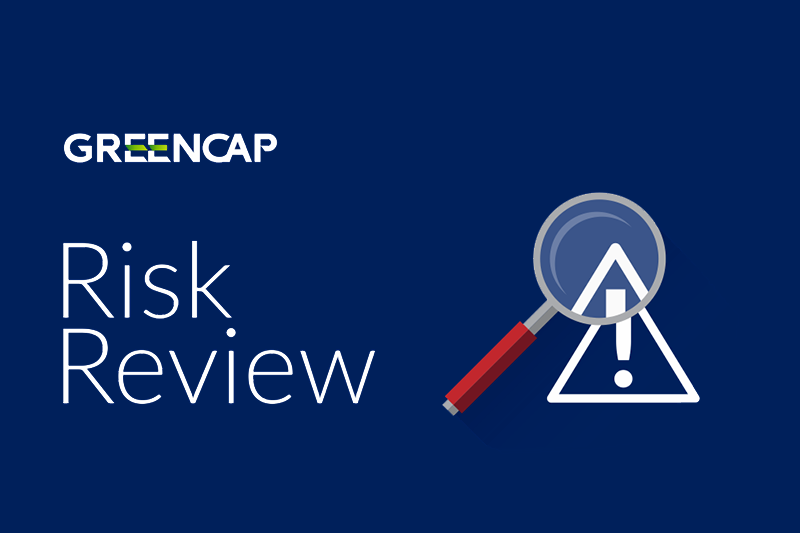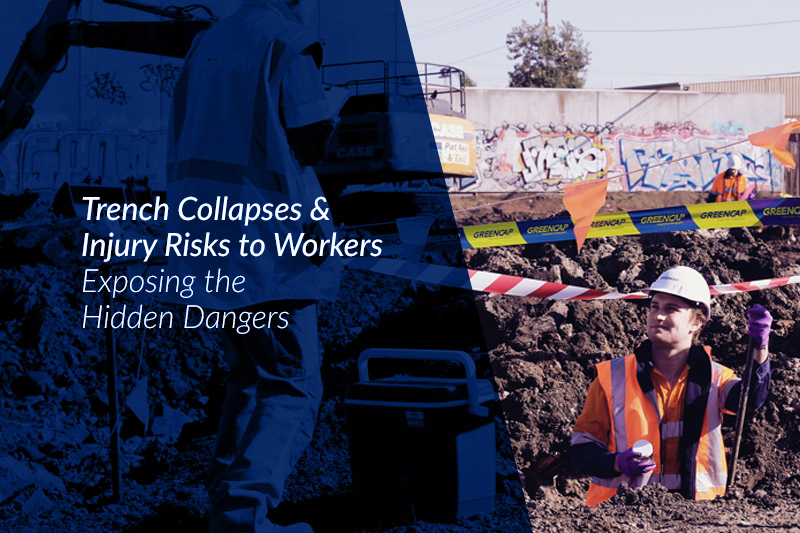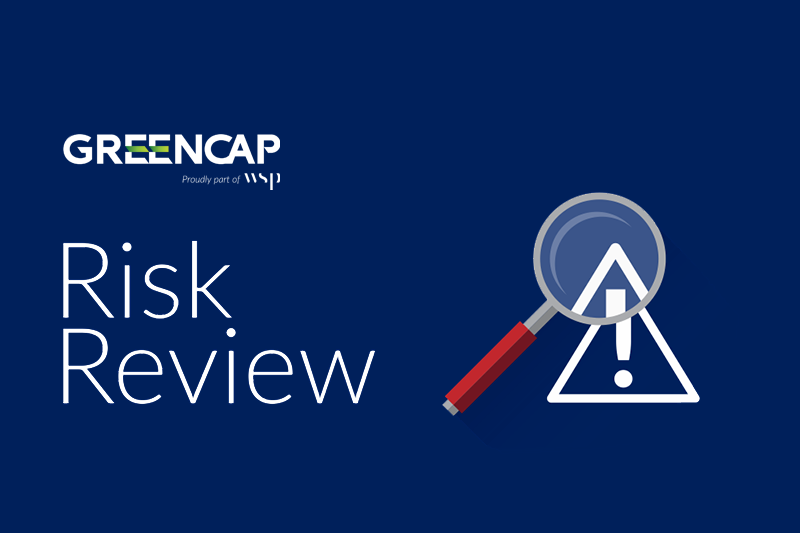News & Insights
Lead Dust Risks & Controls
Lead is an accumulative poison that can be inhaled or swallowed when a process generates lead dust, fumes or mist.
Recent rulings have imposed fines to businesses for improper management of lead, and lead contamination has resulted in multi-million dollar remediation costs:
- Australian company gets $650k bill for soil disposal error (The Construction Index)
- Shooting range fined $77k over staff lead poisoning from ammunition (ABC News)
- Lead contamination saga plagues sports clubs in north-east Victoria (ABC News)
This Risk Review discusses the risks of lead exposure, explains what is considered "Lead Work", and introduces workplace controls.
Why is Lead a Risk?
The World Health Organization (WHO) has identified lead as 1 of 10 chemicals of major public health concern. There are no obvious symptoms at low levels of exposure, and exposure levels that were previously considered safe are now known to produce a wide spectrum of injuries across multiple body systems. Some of the effects can be subtle and not immediately obvious but can show up over time.
Exposure can have significant immediate effects or be responsible for permanent injury or illnesses if not appropriately managed and controlled when working with lead compounds.
People who may be at risk include:
- Anyone visiting a workplace with lead-based activities, processes or residues
- Anyone removing / handling lead-containing material
- People in premises neighbouring a workplace with lead-based activities, processes or residues
- Family members exposed to lead carried home on clothing
- Children, pregnant and breast-feeding women
- Anyone who intends to have children or has not completed their family
What are the Health Effects of Lead Exposure?
Lead's effect is most pronounced on the developing nervous system and brain in children (including unborn babies), where it can cause severe damage and even death.
In all people, lead poisoning can cause nerve, kidney and brain damage. It can occur from a single exposure to a high dose of lead; however, it more commonly builds up in the body over time from repeated exposure to small amounts, often without obvious symptoms of poisoning. Early signs can be non-specific including headaches, fatigue, increased blood pressure and sleeping difficulties.
As lead exposure increases, the range and severity of symptoms and effects also increases and can include reproductive effects in men and women. Blood lead concentrations as low as 5 micro-grams per decilitre (µg/dL) - once thought to be a “safe level” - may be associated with decreased intelligence in children, behavioural difficulties and learning problems.
For more in-depth information about the symptoms of lead exposure, download Greencap's free whitepaper "The Management of Lead (Pb) in Commercial & Residential Buildings"
What are the Sources of Exposure to Lead?
Solid lead presents little or no risk to people; however, when lead is processed in a way that produces lead dust, fumes or mist, it can become absorbed into the bloodstream and distributed to all parts of the body where it may be stored in various body tissues and bones, teeth and hair. It is slowly metabolised and excreted in urine and growing hair.
Exposure Routes
Inorganic Lead can enter the body in two main ways:
Ingestion:
Workers may swallow lead dust which gets on food, drinks or cigarettes or by inadvertent transfer from hand to mouth.
Approximately 30% of the lead a person swallows may be absorbed into the body (depending on the type or form of lead, the particle size and nutrition status of the person; more lead is absorbed on an empty stomach).
Inhalation:
By breathing air contaminated with lead dust or fumes.
Up to 70% of the lead dust or fumes breathed in may be absorbed by the body. This can be converted to an ingestion when coughing and swallowing dust caught in your throat.
Organic lead can also be absorbed through the skin, such as the tetraethyl lead added to petrol.
Sources of Exposure to Lead
Many industrial and domestic products contain lead. The most common cause of lead exposure is dust and flakes from lead paint.
Lead seldom occurs naturally in water supplies like rivers and lakes - lead enters drinking water primarily as a result of the corrosion, or wearing away, of materials containing lead (such as solder, brass fittings and lead pipes) in the water distribution system and/or plumbing system.
Lead in air comes mainly from industrial sources such as mining, smelting and product manufacturing. Wind-blown soil and road dust also may contain naturally occurring lead as well as lead from industrial sources, deteriorated paint, and the combustion of leaded fuel and aviation fuel. These are likely the primary source for lead dust accumulation within buildings.
| Lead Paint | Lead in Soils | Lead in Dust | |
|---|---|---|---|
| Definition |
In residential, public and commercial buildings: In industrial applications: |
Health-based Investigation Levels (HIL):
|
No specific requirements for lead dust in occupational environment (e.g. mg/kg or %) are currently specified in Australia. Greencap adopts a range of “acceptance criteria” for lead in dust based on advice and clearance levels provided in superceded Australian Standards, the most protective HIL for lead in residential soil, and current international standards (e.g. US EPA Brookhaven Laboratory and the HUD Guidelines for the Evaluation and Control of Lead-based Paint in Housing). |
| Codes / Legislation | *AS/NZS 4361.2: 2017 – Guide to Hazardous Paint Management | National Environment Protection Measure (NEPM) - Assessment of Site Contamination 2013 | N/A |
What is a Lead Process?
Under the Model Work Health and Safety Regulations applying to work process for lead paints (s392 — Meaning of lead process), a lead process is defined as:
- Work that exposes a person to lead dust or lead fumes arising from the manufacture or handling of dry lead compounds
- Machine sanding or buffing surfaces coated with paint containing more than 1% by dry weight of lead
- Using a power tool, including abrasive blasting and high-pressure water jets, to remove a surface coated with paint containing more than 1% by dry weight of lead and handling waste containing lead resulting from the removal
- A process by which electric arc, oxyacetylene, oxy gas, plasma arc or a flame is applied for welding, cutting or cleaning, to the surface of metal coated with lead or paint containing more than 1% by dry weight of lead metal
If the work is a lead process, workers must receive information about the health risks and toxic effects associated with exposure to lead.
This definition remains relevant to non-harmonised states (WA & VIC). Full definitions are available in the relevant clauses of the various Regulations (Vic OHS Regulation 178; WA Occupational Safety and Health Regulations 5.53; Model WHS Regulation 392).
What is Lead Risk Work?
A lead process, as defined, must be assessed to determine if the process is lead risk work. Lead risk is defined according to worker’s measured or likely blood lead level, as shown in the table below.
Lead Risk is currently defined as
| Who | Blood Lead Level |
|---|---|
| For a female of reproductive capacity | 10 µg/dL (0.48 µmol/L) |
| In any other case: | 30 µg/dL (1.44 µmol/L) |
In April 2018 the Workplace Exposure Standard for lead was amended and each state/territory has adopted the following blood lead levels for lead risk work:
| Who | Blood Lead Level |
|---|---|
| For a female of reproductive capacity | 5 µg/dL (0.24 µmol/L) |
| In any other case: | 20 µg/dL (0.97 µmol/L) |
This is a significant reduction from the existing definition and will come into force on 1 July 2021 in most jurisdictions, and as soon as October 2019 for Western Australia and June 2020 for Victoria.
A PCBU (or employer) must assess each lead process carried out at the workplace to determine if lead risk work is carried out in the process.
In assessing a lead process, regard must be had to the following:
- Past biological monitoring results of workers
- Workplace airborne lead levels
- The form of lead used
- The tasks and processes required to be undertaken with lead
- The likely duration and frequency of exposure to lead
- Possible routes of exposure to lead
- Any information about incidents, illnesses or diseases in relation to the use of lead at the workplace
Important Note:
This assessment must be made without regard for the use of personal protective equipment.
This reinforces the regulatory requirement to use the hierarchy of controls to manage the risks associated with lead. If adequate controls (without PPE) are implemented so the work is unlikely to increase blood lead levels, the work would not be considered lead risk work.
Biological Monitoring (blood testing) must be undertaken for lead processes likely to cause the blood lead level of a worker carrying out the work to exceed the levels. Workers must also receive information about health monitoring requirements.
Notifiable Work
If it is determined that the work being undertaken at the workplace is lead risk work, or if it cannot be determined that the work is lead risk work, written notification must be provided to the regulator 5 days prior to the work being undertaken. A copy of the notice must be readily accessible to a worker who is likely to be exposed to lead, and the worker's health and safety representatives.
Case Study:
The client’s project was a site of state significance undertaking demolition in parts and the redevelopment or refurbishment of other heritage buildings. Works were being undertaken on an elevated area of a building being refurbished which involved grinding or sanding steel beams and generating a moderate level of dust. A complaint was made by workers in an adjacent building to the safety regulator regarding general dust.
The regulator attended site to follow up on the complaint and requested Lead Risk Work Assessments for the works that were being undertaken. None could be provided, and prohibition and improvement notices were issued resulting in works ceasing on site for approximately six weeks.
Greencap was engaged to assist the contractor with three aspects:
- Undertake lead materials survey of the site
- Develop lead management plans for the site, incorporating the assessments for lead process and lead risk work to remove the prohibitions and improvement notices
- Delivery of Lead Awareness Training to project managers and other site stakeholders
This process set a precedent across the site and enabled all works involving all lead-related works being undertaken by various contractors to be conducted safely, with a practical approach to risk management.
Key Learnings
Project outcomes and expectations must be defined during the project planning stage to prevent delays and variations. Representative qualitative lead sampling strategies are critical to enable a risk-based practical approach to manage lead containing paints and dust.
A well planned and understood scope of works facilitated the project deliverables being met, with only slight variation due to the nature of the materials but this was expected and considered. Significant delays and variations, increased costs and lack of performance perception across industry can be caused by not carrying out the pre-planning and assessments involving a competent person.
What are the Standards for Lead Exposure?
Workplace Exposure Standards (WES) are mandatory in all jurisdictions. They are legally enforceable and not qualified by what is ‘reasonably practicable’. The Occupational Exposure Standard (OES) for lead is currently 0.05 mg/m3. Records of air monitoring must be kept for a minimum of 30 years and must be made available to workers who are exposed.
A more conservative action level (AL) of 0.03mg/m3 should be adopted as the airborne lead level at the boundary of regulated areas (Lead Process Work Areas) to ensure 0.05mg/m3 is not exceeded and to ensure other people outside the Lead Process Area are not exposed to high levels of lead in the air.
Lead Risk Controls
The various state based OHS/WHS legislation refers to the Control of Risk in relation to Lead Processes and Lead Risk Work.
General principles include:
- Confine lead contamination to a discrete “lead process area”
- Avoid contamination of the surrounding environment
- Keep the lead process area clean
- Ensure there is no eating, drinking or smoking in the lead process area
- Provide changing and washing facilities
- Provide laundering, disposal and removal of personal protective equipment (PPE)
- Review control methods
Prior to the commencement of lead work, or as soon as practicable, a PCBU (or employer) must provide information about lead processes to a lead worker or others who may be affected, including relevant workplace health and safety representatives. This information includes information about the health risks and need for health monitoring.
When implementing controls, all people involved (employers, employees, contractors and building/facility owners and managers) should consider the routes of exposure:
| Inhalation | Ingestion |
|
Wet Processes Well-Controlled Dry Processes Avoid Dust Agitation |
Thorough Decontamination Food, Drink & Smoking Control |
How Greencap Can Assist
![]()
Air and Personal Monitoring
Air monitoring in the workplace and at site perimeters allows for the measurement of baseline levels of lead and verification of the effectiveness of control measures.
Greencap’s team of occupational hygienists assist clients in the implementation of lead air monitoring programs including personal monitoring for workers.
![]()
Hazardous Materials Surveys
Greencap’s team of hazardous materials consultants are experienced in undertaking compliance and intrusive surveys for the identification, assessment and control of lead and other hazardous materials in the workplace.
![]()
Awareness Training
Knowledge is essential in risk mitigation. Greencap provides lead risk training that is relevant to the industry in which clients operate and is customised to meet client requirements, policies and procedures.
Courses can be delivered at Greencap training facilities or at your workplace.
The information in this material is not intended to provide, and should not be relied upon, for legal or professional advice and is subject to change.
This material provides general information only and does not take into account your particular needs or circumstances. Before making any decisions, you should assess whether this material is appropriate for you and obtain legal advice tailored to you having regard to your particular needs and circumstances.
Greencap Pty Ltd (Greencap), its officers, employees and agents believe that the information in this material and the sources on which the information is based (which may be sourced from third parties) are correct as at the date of publication. While every care has been taken in the preparation of this material, no warranty of accuracy or reliability is given and no responsibility for this information is accepted by Greencap, its officers, employees or agents. Except where contrary to law, Greencap excludes all liability for this information.
If this material contains links to third party websites, Greencap does not control and is not responsible for the information contained within these websites. None of these links imply Greencap’s support, endorsement or recommendation of any other company, product or service.



Industry News
Risk Review
News
Mid-Coast Outreach & Greencap - Helping to keep communities safe and supported
Risk Review
The Asbestos Register – A cornerstone for managing asbestos
Greencap acknowledges the Traditional Owners of Country throughout Australia and recognises their continuing connection to land, waters and culture. We pay our respects to their Elders past, present and emerging.




